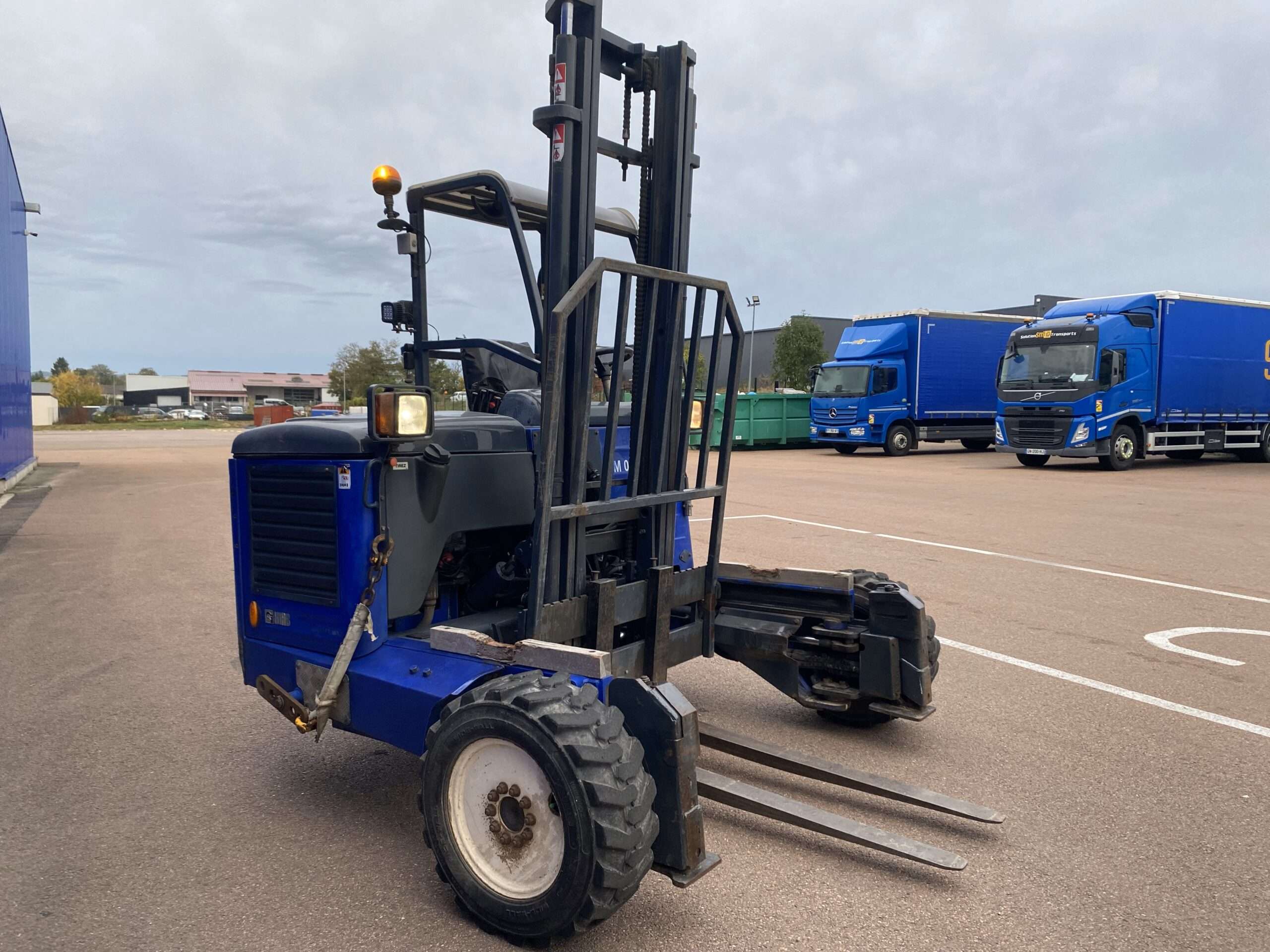The weight of a forklift is a determining factor for its performance and safety. Whether you are considering purchasing a forklift or simply wish to learn more about them, it is important to understand the different characteristics related to the weight of these machines. Indeed, the weight of a forklift influences its lifting capacity, its stability and its maneuverability. Discover what the weight of a forklift is and the different factors that influence it.
How much does a forklift weigh?
Why are forklifts heavy?
Several factors influence the weight of a forklift. Knowing these elements can help you choose the model best suited to your needs.
Size and lifting capacity
The higher the size and lifting capacity, the more robust and therefore heavier the forklift must be. For example, a forklift capable of lifting very heavy loads will require a reinforced structure to guarantee safety and stability during lifting operations. The lifting capacity, lifting height and nominal load capacity are important technical characteristics.
Types of engines and batteries
There are forklifts with diesel or gas engines and electric forklifts. The weight of an electric forklift varies depending on the size and type of battery, whether it involves lithium batteries or standard batteries.
Tire materials and other accessories
Forklifts are equipped with solid or semi-solid tires, which are heavier than pneumatic tires. These tires increase the stability of the forklift by reducing the risk of punctures and improving ground adhesion. Similarly, additional accessories such as counterweights, cabin protection and safety equipment increase the total weight of the forklift.
Design and materials
The materials used, such as reinforced steel, increase the weight of forklifts. A robust design is necessary to ensure durability and safety, especially in demanding work environments. Components such as retractable masts, forks and chassis are designed to support heavy loads, which contributes to their weight.
Technical specifications
A forklift equipped with retractable masts or free lift systems can weigh more than a standard model. Additional options such as air-conditioned cabins, advanced safety systems and specialized handling accessories also add weight.
For efficient and secure delivery of your forklifts, consult our direct home delivery service.
The different types of forklift trucks and their average weights
1) Electric pallet trucks
Electric pallet trucks are small forklifts used in the logistics chain to move merchandise pallets. These compact machines typically display a weight of 500 kg. Their lightness makes them particularly easy to maneuver in confined spaces and efficient for quick transportation tasks.
2) Counterbalance forklifts
Counterbalance forklifts are the most popular type of forklifts. Their average weight oscillates between 1800 and 4000 kg, depending on the model and load capacity. Certain specialized counterbalance forklifts can reach up to 5000 kg, to guarantee maximum stability when handling heavy loads.
3) Electric forklifts
Electric forklifts are equipped with heavy and bulky batteries. Their average weight varies from 1100 to 8000 kg, depending on the model and capacity. This weight diversity is explained by the multitude of models available on the market.
4) Telescopic forklifts and all-terrain forklifts
Telescopic forklifts, also known by the name telescopic handlers, and all-terrain forklifts are designed to handle heavy loads on varied terrains. Their weight can range from 4000 to 10000 kg. These robust machines are indispensable for outdoor applications, where stability and lifting capacity at great height are required.
5) Stackers
Stackers, intended for stacking pallets in warehouses and other indoor environments, have an average weight between 800 and 1600 kg. Their light design allows optimal maneuverability in narrow aisles, thus favoring rapid movement of goods. These characteristics make them ideal tools for storage operations.
6) Side loaders
Side loaders, similar to counterbalance forklifts, are equipped with a special accessory that allows them to move pallets laterally. This type of forklift proves particularly useful in confined spaces and for transporting long loads. Side loaders generally weigh between 4500 and 11000 kg. This additional weight comes from the lateral accessory that reinforces the stability and solidity of the machine.
Each type of forklift has specific characteristics that influence its weight. To choose the model that best suits your needs, it is important to consider not only the lifting capacity, but also the residual load capacity, the center of gravity and the data provided on the nameplate.





